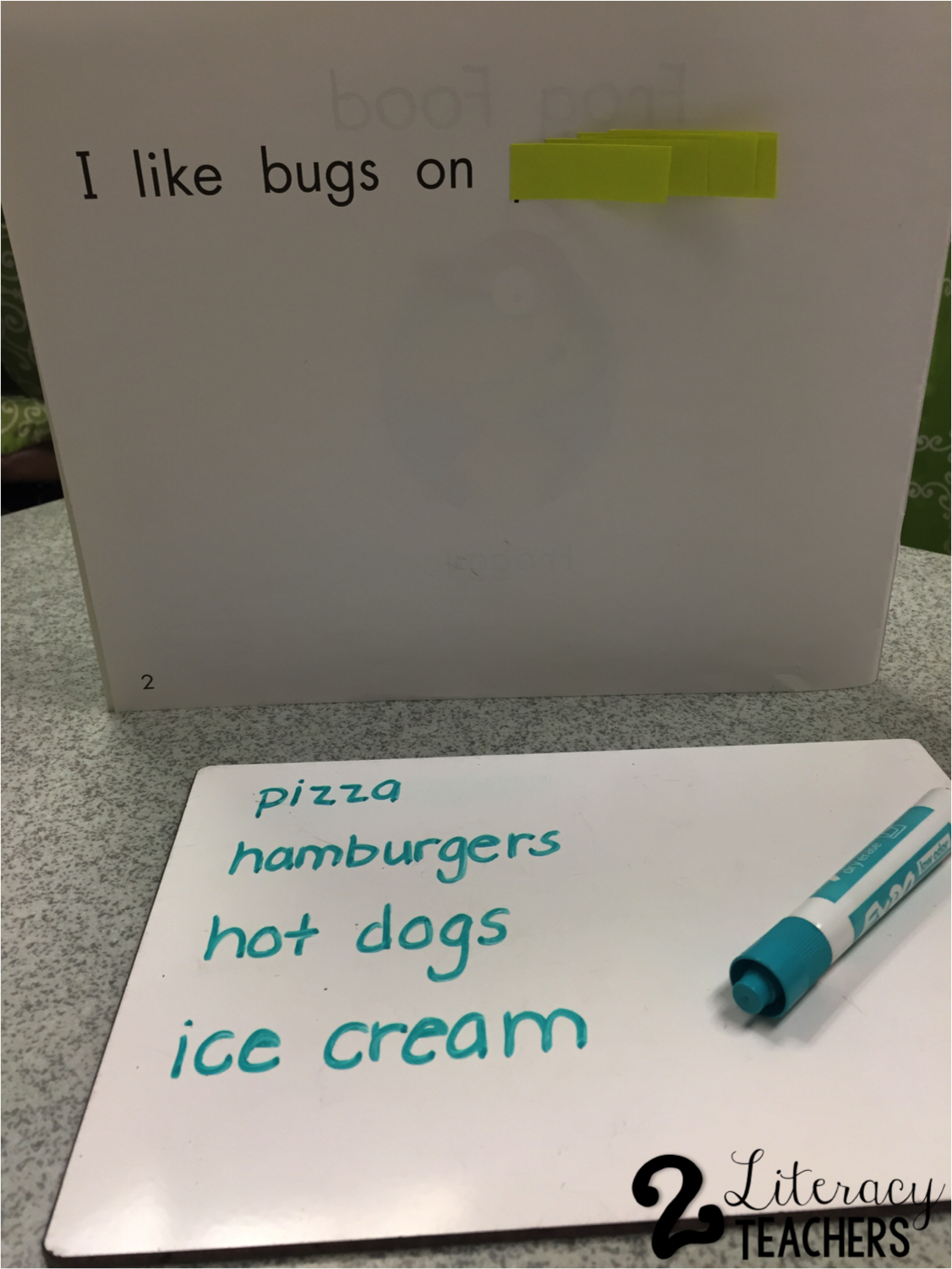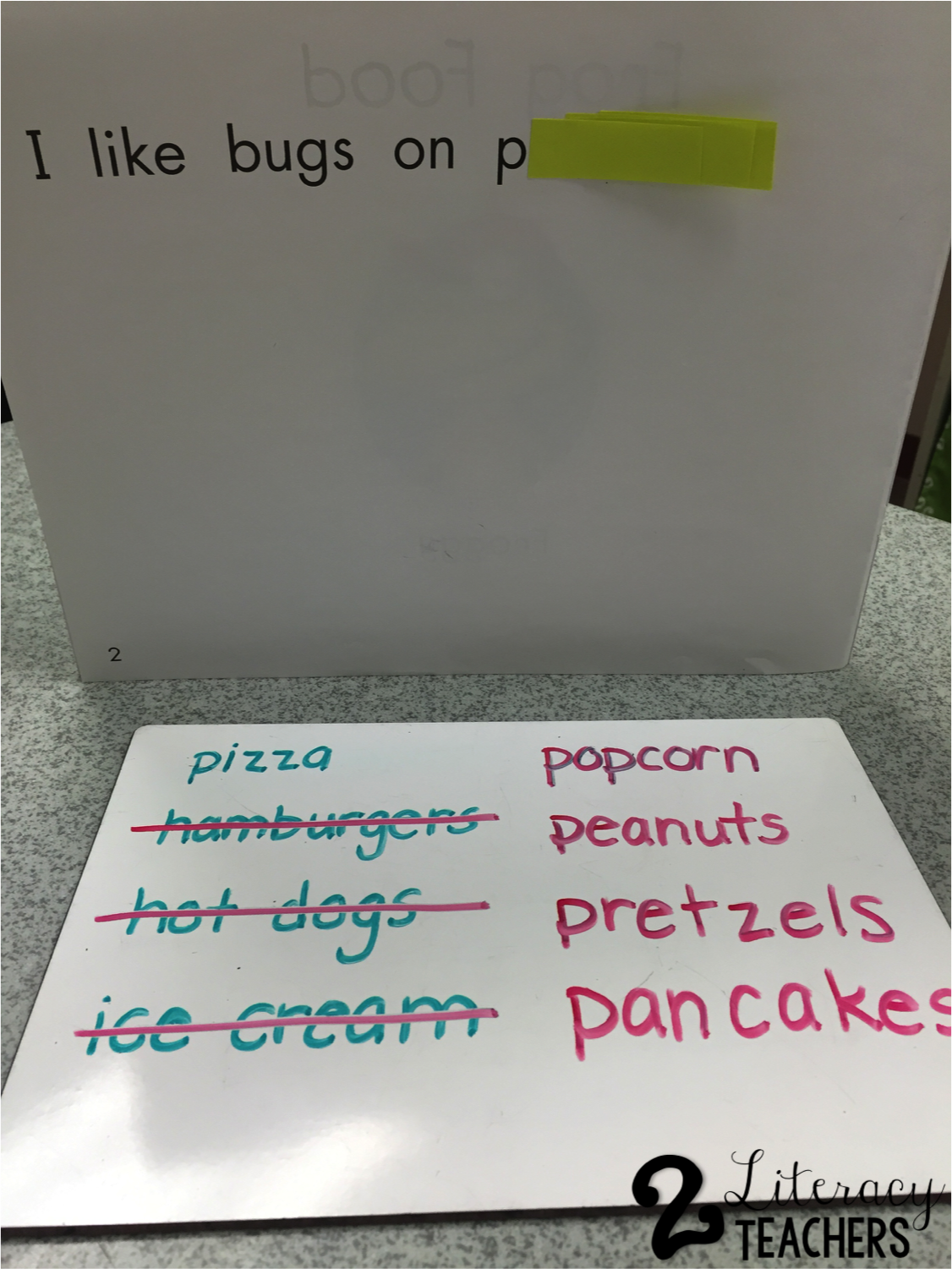Do you have readers who are struggling to read a tricky word correctly? Do they often look at the first letter or letters and guess? That is a common struggle and one that can be difficult to fix…especially with older readers. Previously we gave you some ideas for fixing this, (see here), and here is one more strategy to add to your toolkit. I call this the “Use the Clues” strategy, and it is an oldie but goodie.

Here’s how it works:
Choose a book with a word that may be difficult for students to decode, or words that they typically guess incorrectly, “house” for “home” for example. I use big books for the littles. For the big kids, I lift a portion of a text they will be reading and type it up with wide spaces between the lines.
Next, choose the word you will use to demonstrate with. Cut strips of sticky note that will cover the word. Starting at the end of the word, cover a portion of it using one of the sticky note strips. Then, put another sticky note strip on top to cover the next portion. Continue doing this until you get to the beginning letter (or letter chunk for older students). Your strips will be staggered so that you can uncover one portion of the word at a time.


Then, read with the students up to the covered word. Ask students to tell you what the word could be. Write their predictions on a white board. Uncover the first part of the word by pulling off the first sticky note strip. Read the sentence again together and read the uncovered part of the word. Go back to the words on the white board. For each word ask, “Could it be this word? Why? Why not?” Cross out each word on the white board that doesn’t match the uncovered portion of the word in the text. Add any new words they think it might be based on the clues you uncovered by removing the sticky note strip.


Next, uncover the next portion of the word and repeat the process from above. Continue until the whole word has been uncovered, then read the sentence or text together again for fluency. Wrap up the lesson by discussing why it is important to look at the WHOLE word and read ALL of the sounds/chunks in the word. Make up a fun sound that the class or group will do if someone forgets. It will be a helpful reminder to all to pay attention to those words and read them correctly. (In my groups, we use a squeaky duck, squeaky frog, or squeaky pig when someone “guesses” a word instead of reading the whole word. They love it, it’s hilarious, and it reinforces the lesson in a fun and positive way.

Hope this adds another idea to your tool kit! Happy Teaching!
Smiles,
Kristin

